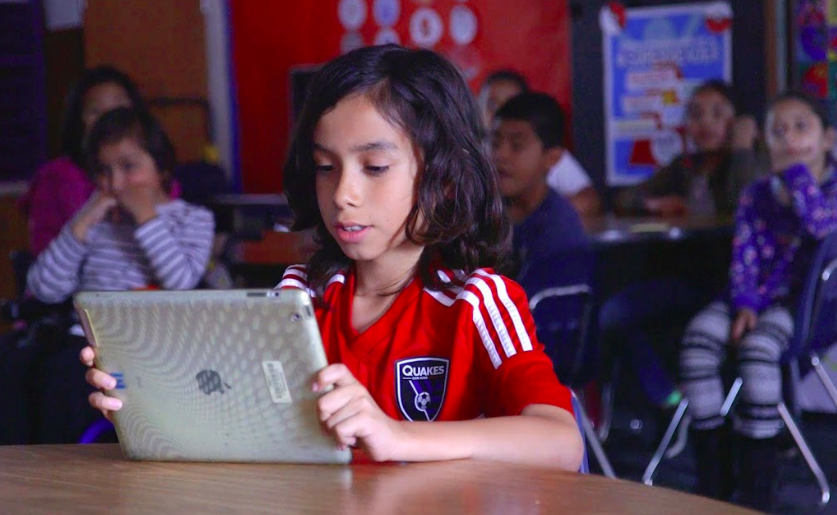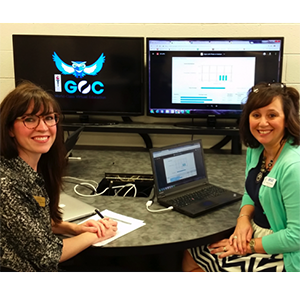
Project Based Learning (PBL) has made a mark in traditional face-to-face classrooms. There is no shortage of evidence showing the beneficial impact of project-based learning on student outcomes. However, this progressive instructional strategy has yet to be adapted to work in conjunction with the advancements in blended and online education. Still, PBL is likely an ideal model of student-centered learning for blended and online environments, because these environments provide additional flexibility in time and space--two resources highly-valued, yet often limited, in the face-to-face classroom. Still, effective PBL in the online or blended classroom depends on teacher ability to design high-quality online content.

Fully-Online Learning Grows
More students than ever before are availing themselves of the opportunity to learn by taking online courses. It is not only college students that are moving to online education. Many K-12 school districts are allowing middle and high school students to take several courses online through their district or a partner online provider. However, often this K-12 online instruction is very didactic in nature and lacks a progressive student-centered approach seen in many face-to-face classrooms today. Current common practice does not mean that online instruction lacks the potential for great student-centered experiences, and progressive learning models like PBL could be the key to improving K-12 online curriculum. However, translating PBL principles into the online environment has been a challenge for K-12 teachers and curriculum developers. How can teachers design a full PBL unit in an online environment that supports learners whether they see the teacher face-to-face (blended) or not at all (fully-online)?
Working on a Solution
As educators, we’re trying to come up with a solution to this challenging question. Gwinnett Online Campus (GOC), a public 4th through 12th online grade school in metro Atlanta, wanted to improve curriculum quality through PBL. It had been difficult for GOC teachers to establish the scaffolding needed in the online environment in order for a PBL unit to be successful. In the past, the PBL units were really just long term student research and report assignments, not true Gold Standard PBL projects. We wanted to change this so that the online student could benefit from the 21st century skills that brick-and-mortar students experience with PBL.
In an effort to make the curriculum more student-centered, we developed a partnership with Kennesaw State University to develop an instructional design model that would help teacher-developers incorporate the PBL strategy into their online courses. We call our model Project-based Online Learning, or PBOL. The model started off very organically in a co-design and development process. We documented every step of this creative process, with multiple iterations as a design and development research project. Based on that study, a draft of the design process model emerged:
PBOL Lesson Structure Model

This image shows the order in which PBOL content is offered to the learner in a learning module, or online unit of instruction. The seven major components of this instructional design model are:
- Driving Question and Hook: Gain the student’s attention and set the stage. This lesson should pique learner interest and make the project relevant for the learner.
- Introduce the Project: This video explains the path the learner is about to embark upon at an overview level.
- Formative Assessments: These will continue across several steps of the project to gauge student understanding. Distinguishing between a student’s content knowledge and his/her project understanding helps the teacher plan between student interventions or online lesson changes.
- Build Content Knowledge: This part of the lesson includes the readings, videos, and images that introduce the learner to new content for understanding and recall that will be used to complete the project.
- Tutorial-by-Example: The tutorial has several sub-components that scaffold the learner’s understanding of the project expectations and processes. This tutorial requires a) an in-depth description of the project, b) a rubric, c) at least one student sample, d) at least one video or screencast where the teacher grades the student sample using the rubric, and e) the opportunity for critical peer or self-evaluation.
- Summative Assessment: The learner submits his or her project, and an opportunity for revision is facilitated.
- Sharing: Student publishes the work to share with an authentic audience.
If you are interested in this model, each step is described in more detail in a paper by us linked among the BIE Research Resources for PBL.
An Example PBOL Unit
For this post, we want to share an example PBOL unit to get you thinking about how you could incorporate PBL into your blended or online courses. Here is a link to a video about a GOC chemistry unit about dietary sugar for high school students as well as student samples.
In this PBOL unit, we challenged students to answer the driving question “Is it better to have natural or synthetic sugar drinks in school vending machines?”. Students completed investigative labs and collaborative activities to help them form their position and supporting evidence. The project culminated in a vending machine policy proposal to school leaders. Their arguments helped determine whether or not the school would provided sugary drinks in the school vending machines.
The strength of this unit is the topic, which is timely and authentic to the students’ everyday life. A primary weakness is that we did not involve outside experts to collaborate with the students on their projects. As the unit is refined over time this weakness will be addressed. How would you change this unit plan to meet the Gold Standard PBL model? Tell us on twitter #BIEPBOL.
For questions about the model, contact Anissa with Kennesaw State University at [email protected] or on Twitter @LokeyVega.
For questions about the PBOL examples provided, contact Kimberly with Gwinnett Online Campus at [email protected].


